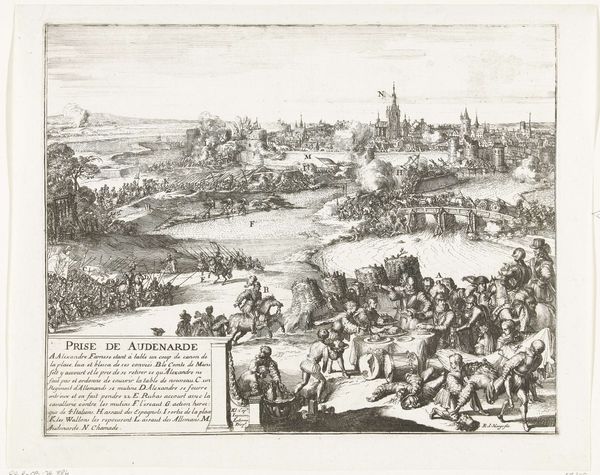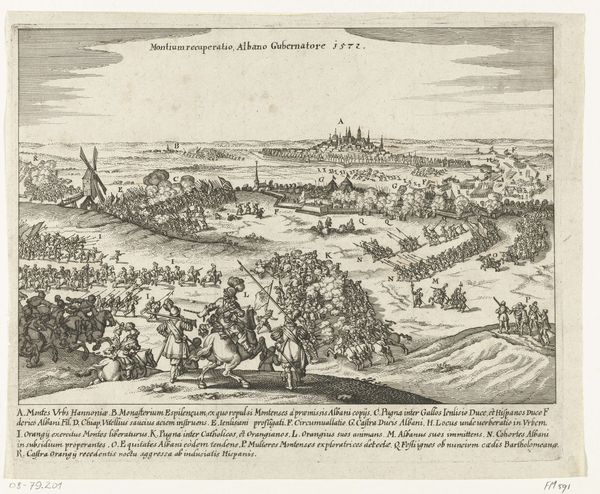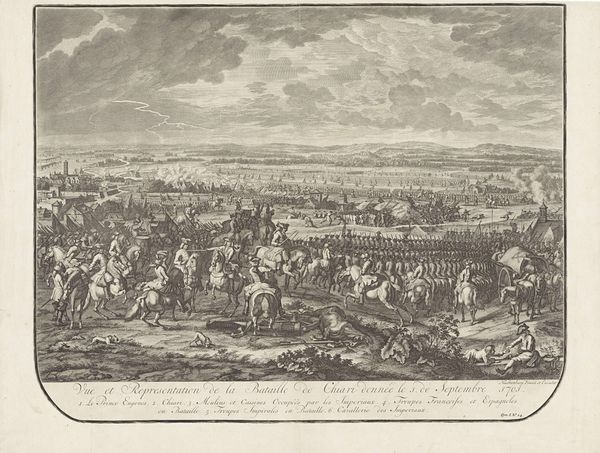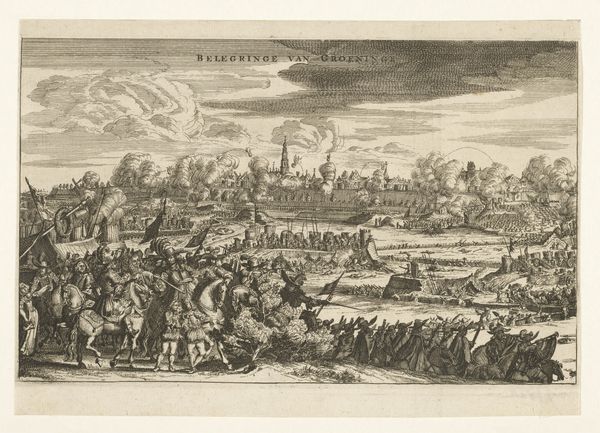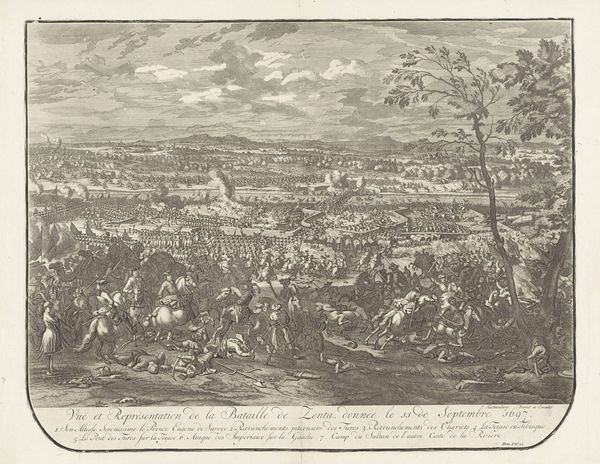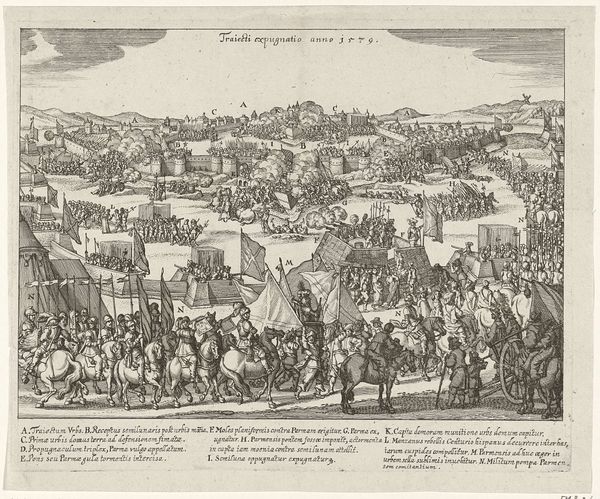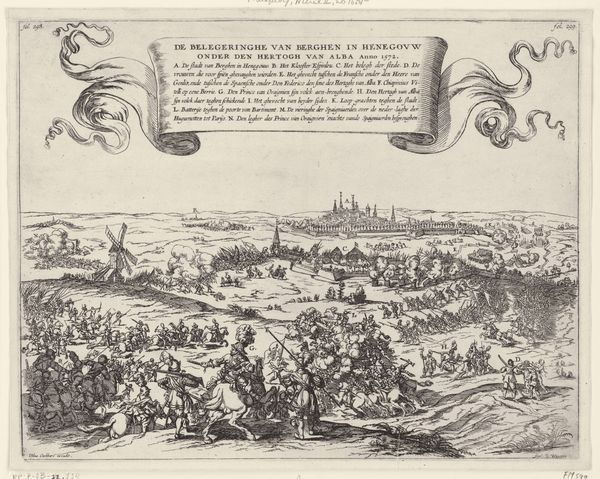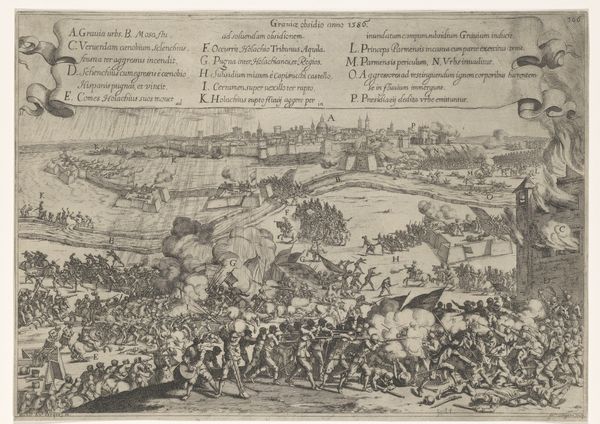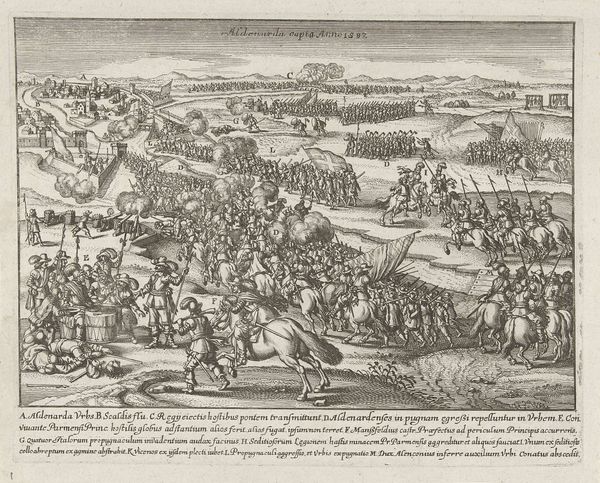
print, engraving
#
narrative-art
# print
#
pen sketch
#
old engraving style
#
cityscape
#
history-painting
#
engraving
Dimensions: height 271 mm, width 345 mm
Copyright: Rijks Museum: Open Domain
This print, made by Romeyn de Hooghe, depicts the Siege of Maastricht in 1579. It’s an etching, created by carefully incising lines into a metal plate, inking it, and pressing it onto paper. The process itself—etching—is tied to the rise of print culture and capitalism, which allowed images like this to circulate widely, shaping public opinion and documenting historical events for the masses. It is a meticulous, labor-intensive process. The artist had to be a skilled draughtsman and metalworker, capable of translating a complex scene into a network of fine lines. Look closely, and you can see the artist’s effort in rendering the chaos of battle, the architecture of the city, and the faces of the soldiers. Prints like this helped construct a shared visual understanding of events, and reinforced the social and political order of the time. The making of the print thus becomes a powerful act, influencing how history is remembered and understood.
Comments
No comments
Be the first to comment and join the conversation on the ultimate creative platform.
